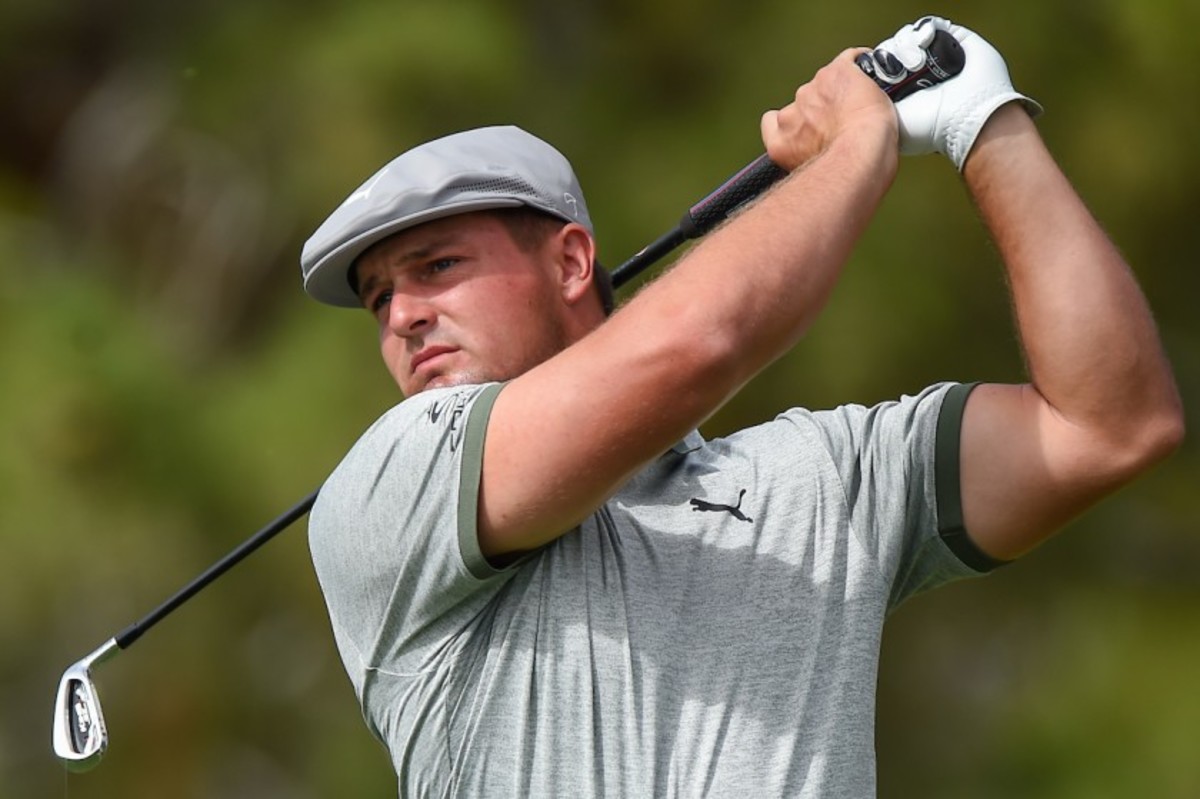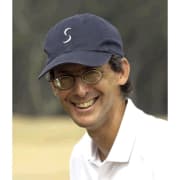2020 Masters: Can Augusta National withstand the onslaught?

There has not been a Masters like this one in living memory – if ever. An autumn start, rather than in the fragrant bloom of early April. No spectators lining Augusta National’s rolling fairways or on the hillsides overlooking the greens. Nor thunderous roars accompanying the barrage of birdies and eagles. The air likely will be a bit cooler than usual, and the daylight envelope for play will be more than two hours shorter. But in other ways, the 2020 Masters, slated for Nov. 12-15, will be an event worth watching for the impending drama, and not simply because Tiger Woods is the defending champion.
We’ll also be watching Bryson DeChambeau. He threw down the gauntlet and all but announced himself as a looming threat. And he did so not with his triumph at the U.S. Open in September but with his Instagram post on Oct. 23 claiming “First time over 400, Carry… Not even the 48inch driver.” The accompanying image showed a launch-monitor readout of a 403.1-yard carry and a ball speed of 211 mph.
Welcome to golf’s new world order.
Not since physicist Enrico Fermi sent out his famous coded message in December 1942 announcing the first successful chain reaction involving the atom (and we all know what that led to) has a technical breakthrough of this magnitude raised alarms about what lies ahead. If DeChambeau can replicate anything close to this admittedly experimental achievement under championship conditions at the Masters, it could reduce Augusta National to a pitch-and-putt course, with the par 5s particularly vulnerable and within reach with wedges on second shots.

During four days of the U.S. Open at Winged Foot, DeChambeau adopted a radically aggressive strategy that combined unparalleled distance off the tee with slightly better-than-average accuracy to turn the national championship into a runaway victory. While much has been made of his hitting only 23 fairways in regulation – the fewest recorded by any U.S. Open champion –he in fact hit one more than the average for the field all week. Combined with an average measured drive of 325.6 yards, and with some of his drives having carried 350-plus yards, he ended up with short irons into most of the par 4s, as well as at the 565-yard par-5 ninth hole.
Give him credit for a combination of rigorous scientific analysis and a physical regimen by which he has bulked up by 40 pounds, with muscle, not fat. The results since the June reopening of the PGA Tour after a three-month hiatus during the COVID-19 pandemic have been a dramatic rise in his driving distance. From the 2018-19 PGA Tour season to 2019-20, DeChambeau’s average drive improved from 302.5 yards to 322.1. In two events during the 2020-21 season, he has averaged a PGA Tour-leading 344.4, almost 11 yards ahead of the next-longest driver, Dustin Johnson.
At Augusta National, that kind of distance brings particular rewards, given the nature of the design, the positioning of key hazards and the way in which forward-kick points are positioned. At the full-length holes with fairway bunkers – Nos. 1, 2, 5, 8 and 18 – a 330-yard carry gets the golfer just over the sand. On the 350-yard par-4 third hole, a fairway-bunker complex is in play for the layup, but the green is readily within reach for a DeChambeau-ian drive. Whether it’s wise to do so is another matter, but having a chipping club in hand, regardless of the intervening ground contours, might well be preferable to a fully flighted approach.
Of real concern strategically to the design integrity of Augusta National, a 1933 Alister MacKenzie/Bobby Jones creation that has been lengthened to 7,475 yards, is how fairway kick points in the 320-330 range are now carry-able and thus vulnerable to a bonus thrust of forward roll that will further separate the power game from a more strategic, tactical approach. Two par 5s, the 575-yard second and the 530-yard 15th, are extremely vulnerable here; drives cresting the hill and carrying 330-plus yards on either hole will gain a forward turbo boost of another 50-80 yards, leaving short irons or wedges for second shots to these greens.
When hitting short irons and wedges into greens designed for mid-irons, a golfer realizes a tremendous advantage, not only over the field but over the character of the golf course. Target golf becomes more readily possible, and the distribution of shots needed narrows fundamentally.
There will be some inherent features that might mitigate this onslaught. For one thing, the mowing pattern of the overseeded ryegrass, from green to tee, poses a minimal impact on “braking” the ball, by only 2-3 yards, agronomic studies show. The cooler ambient weather – typically about 5 degrees in daily lows and highs compared with playing the Masters in early April – will take a little bit of zip out of the flighted ball. So, too, will ground conditions, given the lower sun angle and shorter daylight, which means a little less drying of the golf course should rain fall – though here this is offset by marginally less proclivity for rain, from a 27-percent chance on a daily basis to 19, as per weather apps.
Should power golf bring the course to its knees, so to speak, there is a lot the club could do to defend itself down the road. There’s an additional 50 yards to be had at any moment on the 510-yard, par-5 13th, given the club’s acquisition of an adjoining five-acre parcel from Augusta Country Club. And an ambitious architect, armed with enough resources and ego, could move enough holes around like a jigsaw puzzle to find considerably more distance at almost every turn.
There’s room to move the first green back and the second hole over and back. The same goes for the fourth and fifth holes, as well as 10, which would open up room for lengthening 14 and 15. (Club officials did not comment when asked about such possibilities.)
At that point, the club would not be merely tinkering with lawn chairs but rebuilding from head to toe. An easier path might just be to give in to the de facto nature of bifurcation on the PGA Tour – they are playing a different game, after all – and just issue a tournament ball under a local rule.
We'll see. Given the initial if tentative nature of its Distance Insights report in early February, and the promise of further study to come, we know that the USGA and the R&A are watching closely.
So is the entire golf world. It promises to be a Masters like no other.
Sign up to receive the Morning Read newsletter, along with Where To Golf Next and The Equipment Insider.
